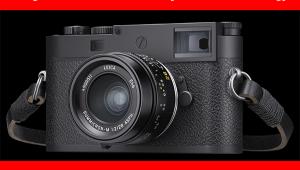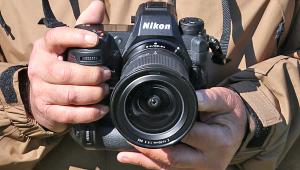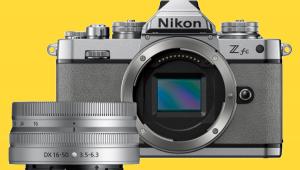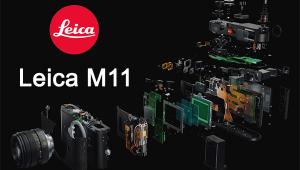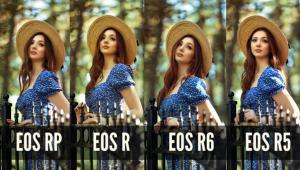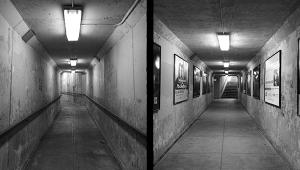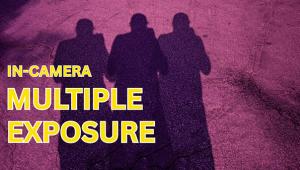Fujifilm X-Pro2 Mirrorless Camera Review

(Editor's Note: Lab Review lab tests and comments are supplied by BetterNet, Shutterbug’s TIPA-affiliated testing lab and edited by George Schaub. Shutterbug is the sole US representative within TIPA, a worldwide association of photo and imaging magazines.)
Just like the Fujifilm X-Pro1, which was introduced in 2012, the new Fujifilm X-Pro2 mirrorless camera is based on an APS-C sensor, but it uses a completely new version of the “X-Trans CMOS” sensor and now offers 24 megapixels instead of 16MP. The X-Pro2 is the first camera of Fujifilm’s X system that uses this new sensor. (Note: The new X-E2S still uses the 16MP version sensor.)
One new feature in the X-Pro2, aside from higher resolution, is the use of circuit lines based on copper instead of aluminum, which allows for a faster, more effective data throughput and is one reason why the signal-to-noise ratio of the X-Pro2 is improved even though the pixel density of the chip is higher. Our tests revealed excellent noise results at even high ISO speed settings. (Note: Due to its new structure and its higher speed, the new sensor should be able to record videos in 4K resolution, but, according to Fujifilm representatives, the X-Pro2 will stay a “Full HD” video camera and will not be able to record 4K sequences even with firmware updates in the future.)
A second unique feature of the Fujifilm X-Pro2 is its “hybrid viewfinder”: This viewfinder combines an optical rangefinder system with an electronic viewfinder. When using the optical viewfinder the photographer can also, for example, use the LCD to view the current active field of view of the lens, including parallax compensation when shooting close-up photos, even with zoom lenses. Using the small lever on the front, the photographer can switch to a full electronic viewfinder system with a resolution of 2.36 million RGB dots.

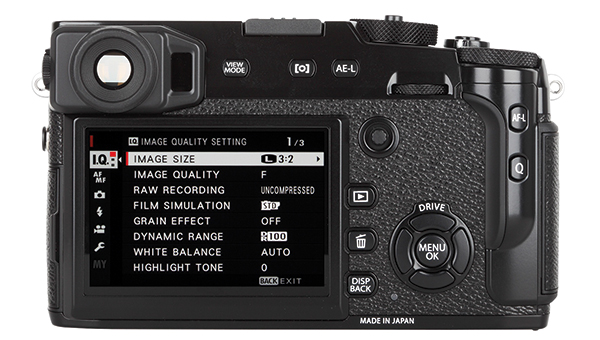

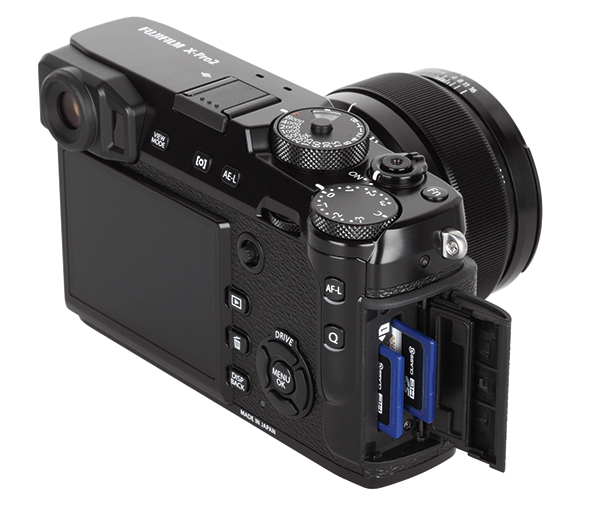
Camera Build, Layout & Performance
Due to its retro design, the new Fujifilm X-Pro2 offers a lot of setup wheels, function buttons, levers, and more, just like an analog rangefinder camera. It offers a shutter speed dial on the top with full EV steps, with intermediate settings available via the LCD menu and the setup dials. By lifting the outer ring of the shutter speed dial the photographer can change ISO speed settings. The X-Pro2 has a setup dial on the front and a second dial on the back. In combination with the small joystick on the back, all parameters are quickly and easily controlled. Overall, this joystick accelerates menu navigation. A second dial on the top allows the user to easily configure EV compensation by +/- 3 EV steps.
The camera offers numerous individual settings: In addition to Fujifilm’s “Dynamic Range settings,” the photographer can change the light and shadow reproduction manually in the X-Pro2’s menu. Controls like the “Fn” button on the top can be configured as well, including a depth of field preview control.
The camera has a robust body that is well sealed, and therefore weatherproof. The sealed cap on the right-hand side of the body covers two SD card slots. The first slot can be used for all kinds of SD cards, including “UHS-II” systems; the second will work with all cards up to the “UHS-I” standard.
The camera is very fast, especially the AF system. The X-Pro2 offers an 11x7 or a 21x13 AF sensor area with a focus area that can be defined by the photographer. It’s a hybrid AF system that combines phase detection and contrast metering. When focusing manually the camera offers additional helpers like a “dual split image” mode, which can be compared to focusing with an analog split-focusing screen. It also offers a focus magnifier function and focus peaking.
The camera offers numerous analog film simulation modes: In addition to the previously available “Provia,” “Velvia,” or the “Classic Chrome” mode, it now offers the Fujifilm “Acros” black-and-white simulation. This simulation includes a new and configurable film grain simulation that can also be applied when shooting in color photo modes, as well as various black-and-white filter simulation effects.

Comments On Image Quality
Color: The Fujifilm X-Pro2 showed a slight oversaturation in our color test chart. The GretagMacbeth chart was reproduced with 112 percent. The white balance system worked very well and showed only a minor shift of the bright gray pattern into the yellow and green direction, although we note that the aberration of colors to their given values on the test chart is low. Red nuances and skin tones show a small shift into the more yellow and orange area, but the overall color reproduction is excellent.
Sharpness: The camera reproduced the ISO 12.233 chart with 3,977 of 4,000 lines per picture height and therefore converted its nominal sensor resolution completely into visible image details. The image processor uses an intense sharpness filtering, so Imatest showed a “clipping warning” for exaggerated contrast lines, but the over/undershot effects are still on an acceptable level. The exaggerated contrast lines are visible in our portrait shot. The hair structure looks a little over-sharpened. Image details like the thread of the spools in our test box are reproduced very naturally and are highly differentiated.

Noise: The Fujifilm X-Pro2 showed an excellent performance in our noise tests. The luminance noise factor remains on a very low level even at the highest ISO speed settings. Even at ISO 12,800 it is still only 0.81 and therefore below the 1.0 percent mark.
Color noise is filtered out very effectively. At ISO 6400 some artifacts get visible in the gray pattern of the Stouffer 4110 chart, but there are still a lot of details visible in the images. At ISO 12,800 the combination of anti-noise filtering and sharpness filtering starts to become visible.
The dynamic range results are very good: At ISO 400 the camera reproduced the Stouffer chart with 11.6 f/stops. Up to ISO 12,800 the dynamic range stays on a high level of about 10 f/stops.
(Note: The X-Pro2’s Raw files can be converted with Fujifilm’s Raw converter software, available at Fujifilm RFC. Check OS version compatibility. Adobe Photoshop CC 2015, including the current “Camera Raw” plug-in 9.4.0.548, and Adobe Lightroom CC 2015.2 are also able to open and convert the Raw files.)

Comments On Video Functions
The Fujifilm X-Pro2 offers sophisticated video functionality for movie sequences in Full HD resolution. The camera is able to record Full HD videos with up to 60 frames per second. Videos are recorded in Apple’s QuickTime MOV format with H.264 compression and high data rates: Using the first card slot with fast UHS-II SD cards is recommended for recording videos.
To start video recording the user can press the “Fn” button on the top of the camera, which is right beside the standard shutter release button. The camera doesn’t offer a dedicated video recording button and this “Fn” button can be used for a lot more functions. The camera doesn’t offer a dedicated video mode. All manual settings for taking still images can also be used for video recording. For example, to record videos in Aperture Priority mode the photographer has to change aperture size with the lens ring; the automatic exposure system will choose the required shutter speed setting.
In addition to setting aperture size or shutter speed manually, the photographer can also choose the desired ISO speed and is not limited to a maximum “video ISO speed” like many other digital cameras. The camera offers a lot of different frame rates, including standard frame rates for PAL and NTSC systems (25/30 frames per second) as well as the Blu-ray compatible “movie” mode with 24 frames per second.
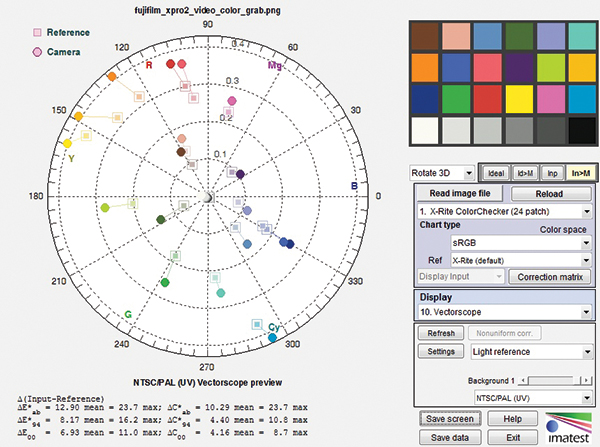
Comments On Video Quality
The Fujifilm X-Pro2 showed an excellent performance in our video resolution tests. The ISO 12.233 test chart was reproduced with 915 of 1,080 lines per picture height, which is a very good result for video recording. Slight over-sharpening of the video result is also noticeable—just like in photo mode—but our test scenes were reproduced without aliasing or moiré effects.
The color results are similar to the color results of the X-Pro2 in photo mode: The camera created images with a very natural look, while brighter neutral tones showed a slight shift into the more yellowish or greenish areas of the color space. But the overall color reproduction is quite neutral.
The videos also achieved very good results in our noise tests. Color and luminance noise results are very low. However, the performance in the dynamic range test is disappointing: The camera achieved a maximum of only 5-6 f/stops in video mode. This may be a result of internal video processing and video compression, but is considerably lower than the results in photo mode.

© George Schaub

© George Schaub
Scorecard
Pros
› High-resolution images with brand-new X-Trans CMOS sensor
› Fast AF system
› Unique hybrid viewfinder system
› Very nice color reproduction
Cons
› No swiveling LCD
› No built-in flash (though external flash units with TTL metering are available)
› Disappointing dynamic range in video mode
The Fujifilm X-Pro2 has a list price of $1,699 (body only). For more information, visit fujifilmusa.com.
(Lab Review is where we publish web-exclusive lab reports on cameras. To read more Lab Reviews, click on the Reviews tab on the top navigation bar of this page. New photo gear reports are published frequently, so check Reviews for more equipment evaluations from Shutterbug writers.)






